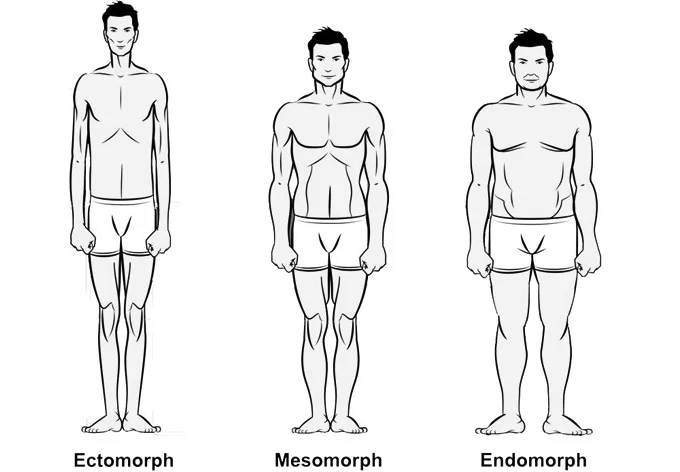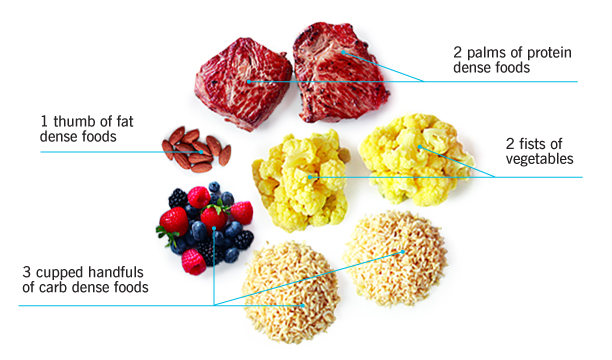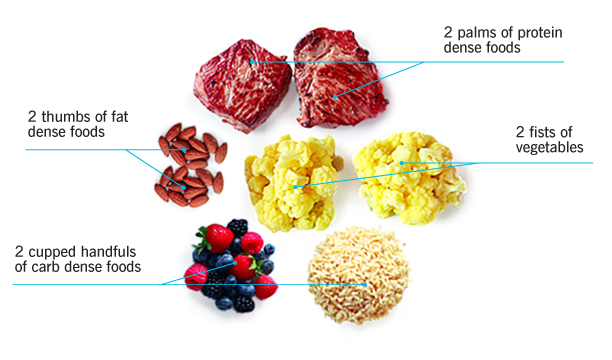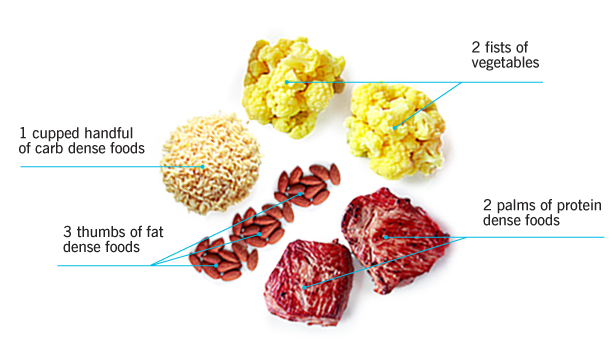
Ectomorph, mesomorphs, and endomorphs, you’ve probably heard these phrases thrown around at one point or another during your fitness journey. These three body types determine everything from the type of sport you may excel at, to the optimal macronutrient split for your body.
Different body types require different sources of fuel. One body type may prefer and work well with one source of fuel (macro-nutrient) such as carbs, while another may function better with fats. Likewise, each body type (there are three we must know) requires a different total calculated amount of foods. Read on to learn more!
There Are 3 Body Types You Must Know
In the 1940s, an American psychologist named William Herbert Sheldon categorized the human physique into three distinct categories. Another term used to describe a unique body type is known as a somatotype. There are 3 body types that you must know in order to master your muscle-building potential and fuel your body for what it truly needs.
- Ectomorph (narrow shoulders, narrow waist)
- Mesomorph (broad shoulders, narrow waist)
- Endomorph (broad shoulders, broad waist)
Which body type do you fall under? Let me know!
The Two Crucial Reasons to Eat for Your Unique Body Type
A body type is more than just describing the way an individual physically looks.
It’s true that a picture paints a thousand words. A somatotype may indicate the metabolic differences and needs of an individual.
Further, falling under one of these distinct body types can provide information about how your body will respond to food intake.
For instance, an ectomorph will generally have a higher basal metabolic rate (BMR) than, for instance, an endomorph.
Therefore, an ectomorph can burn more calories at rest, which results in less fat gain.
This explains the differences in metabolism between individuals and why Sally can’t gain any weight despite chowing down a gazillion Maccas cheeseburgers (upsized too!) after 6 pm (what no way?!). On the other hand, you seem to gain 20lbs by just looking at the tip of a celery stick.
On top of this, your body type can explain more about your hormonal profile and sympathetic nervous system (SNS) characteristics.
The Key Next Step to Dialling in Your Nutrition for Your Body
Once you have established your unique body type, its time for you to adjust your nutrient intake according to your allocated somatotype. This will help you to eat according to your body type in order to reach your desired body composition and fitness goals efficiently.
It is also important to note that only a small minority of individuals will fall under the true definition of one of these body types. Most often, a person will be a hybrid between two (or even three) of the somatotypes. and will exhibit unique characteristics taken from each of the body types.
On top of this, an individual who may initially appear as an endomorph may in fact be a mesomorph after shedding off 100lbs of bodyfat through consistent training and rigid adherence to a diet that helps them lose weight. The change in the outward appearance of the individual may reveal his true body type.
Having a leaner physique (under 15% for males and 22% for females) may potential indicate and reveal which of the tendencies of three somatotypes your body exhibits.
How to Program the Optimal Nutritional Intake for Each Somatotypes:
Ectomorphs are individuals that you might refer to as ‘hard-gainers’. These individuals exhibit characteristics such as a smaller frame, and thinner limbs. They are typically taller than the other two somatotypes and have a hard time gaining weight and building size. You’ll see ectomorphs in sports such as long-distance running, basketball, and triathletes. Muscular endurance is a key attribute of this body type.
These individuals are typically thyroid dominant. They burn more calories at a rest and tend to have a high carb tolerance. If you have a friend who guzzles down red-velvet Krispy Kreme doughnuts without gaining weight – they are most likely an ecto.
On top of this, they are also SNS (sympathetic nervous systems) dominant. This simply means that they have a higher sensitivity to stress hormones such as adrenaline and noradrenaline.
The macronutrient profile this body type should eat more of is carbs. Keep protein moderate and err more towards the lower side of the fat intake. A higher carb and lower-fat diet is an ectomorph’s best friend. Fat is typically satiating and for this body type, we want the individual to eat more calories to assist with gaining more weight. Protein should roughly be kept at 25-30% of the total daily macronutrient split for the ectomorph individual.
Using the calorie portion control guide in my previous blog, here is what a typical meal would look like for an active ectomorph male:
- 3 cupped handfuls of carb-rich foods
- 2 palms of protein-rich foods
- 2 fists of vegetables
- 1 thumb of fat-rich foods

For an active ectomorph female, just halve the servings to provide a template of what each typical meal would consist of.
Mesomorphs are typically defined as having that ‘athletic look’ – broad shoulders and a narrow waist. They have a medium frame structure, typically packs on an impressive amount of lean body mass (for active meso’s that is). These are the LeBron James, Usain Bolts, and Michael Phelps of the sporting industry. Mesomorphs are prevalently seen in sporting activities of an explosive nature – such as gymnastics, sprinting, and combat sports. Speed and agility is a mesomorphs specialty.
Testosterone is a mesomorph’s best friend. Individuals that can safely classify themselves as a mesomorph literally breathes and lives of this stuff – it’s disgusting. This enhanced level of natural testosterone production results in a significantly increased predisposition for building more muscle and shedding off body fat.
Meso’s are also growth hormone (GH) dominant which explains why they typically pack on more muscle and find it easier to reduce body fat. The growth hormone is a vital hormone that stimulates growth in all tissues of the body – and essentially functions as a messenger to tell your body to grow!
If you’re a meso, your macronutrient profile will consist of a variety of fats, carbs, and protein. A meso body works best with a balance between all essential macros; a preference over carbs or fats may indicate whether you choose one more than the other. Protein should roughly consist of 30% of your total daily macronutrient split.
Using the calorie portion control guide in my previous blog, here is what a typical meal would look like for an active mesomorph male:
- 2 cupped handfuls of carb-rich foods
- 2 palms of protein-rich foods
- add 2 fists of vegetables
- 2 thumb of fat-rich foods

For an active mesomorph female, just halve the servings to provide a template of what each typical meal would consist of.
Endomorphs are typically defined as having a larger frame structure than their counterparts. If you were born with broad shoulders and a broad waist, you are most likely an endomorph. Note: there is a fine line between someone being overweight and an endomorph. Not all overweight people are endo’s; neither are all endo’s overweight. Endomorph celebrities include that of Jennifer Lopez, Beyoncé, and Marilyn Munroe – all individuals with impressive physiques.
If you were blessed with the structure of an endomorph, you are suitable for sporting activities such as rugby football, power activities (e.g. the shot-put), and Olympic weightlifting. Strength is your middle name if you rock this body type.
Endomorphs typically store fat easier and find it harder to shed off unwanted body fat. This may due to endo’s being naturally less active than their counterparts. While an ectomorph may burn off excess calories through movement in the form of exercise or NEAT (non-exercise activity thermogenesis) tendencies/activities such as fidgeting, an endomorph typically does not expend that surplus of calories and rather stores it instead. Less expenditure means fewer calories burned.
Therefore, this profile results in more energy storage in the body causing an increase in lean body mass and adipose (fat) tissue. Therefore, endomorphs have a lower carb tolerance, and all foods rich in carbs should be consumed during/after exercise, to maximize muscle-building potential and body composition adaptations (e.g. minimize fat gain). Protein should be kept at roughly 30-35% of an endo’s macronutrient split, and fats should comprise a higher amount of the calorie intake. Prioritize fats and protein – and keep carbs on the lower end of the equation.
Using the calorie portion control guide in my previous blog, here is what a typical meal would look like for an active endomorph male:
- 1 cupped handful of carb-rich foods
- 2 palms of protein-rich foods
- 2 fists of vegetables
- 3 thumb of fat-rich foods

For an active endomorph female, just halve the servings to provide a template of what each typical meal would consist of.
Now Where Should You Go from Here (A Brief Conclusion):
Awesome! So, you just learned how to eat according to your somatotype. Now where do you go from here? Follow the template allocated per body type and follow the one that you think matches your body type the best. Remember you know your body the best. Experiment, play around and use the process of trial and error to help you reach your fitness goals. Remember the template allocated is for an active individual. Each body is highly varied and requires different total energy intakes.
If you want to lose weight, remove a portion of food from the template.
If you want to gain weight, add a portion of food from the template.
Play around until you see and notice the results you want to obtain. This is not the end-all, be-all nutritional strategy that will change your life. It may work, but ultimately your effort to reach your goal is what will take you far.
Ectomorph
- High carb tolerance
- Include more carb-dense foods throughout the day
- A Veggie and Fruit Ratio of 3:1 is ideal (eaten at each meal)
Mesomorph
- Moderate carb tolerance
- Moderate intake of carb-dense foods throughout the day
- A Veggie and Fruit Ratio of 4:1 is ideal (eaten at each meal)
Endomorph
- Low carb tolerance
- Limit carb-dense foods throughout the day (Prioritize mainly during/after a workout)
- A Veggie and Fruit Ratio of 5:1 is ideal (eaten at each meal)
For carbohydrates prioritize starchy, whole-grain, and minimally processed sources.
Credits to Precision Nutrition for the Photos + Awesome Inspiration & Information
Kaiya from Kaiya Nemish Online Training



